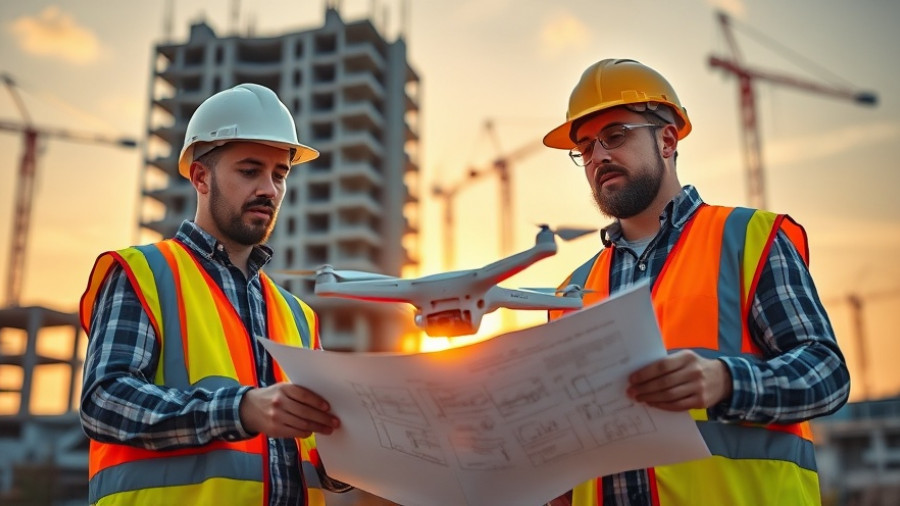
The Surge in AI-Driven Construction Tech Investment
The construction sector in the U.S. is experiencing a groundbreaking transformation, with venture capital investments in construction technology skyrocketing to an unprecedented $3.96 billion in the second quarter of 2025. This marks an impressive 75.2% increase compared to the previous year, indicating a shift in how investors and construction firms perceive the integration of artificial intelligence (AI) and machine learning into their operations.
AI’s Growing Role in Construction
With 68% of this investment—approximately $2.71 billion—funneled into startups utilizing AI, it's clear that these technologies are no longer an experiment but a vital component of modern construction practices. As projects become increasingly complex, requiring intricate coordination across multiple trades and supply chains, AI tools have emerged as indispensable. They provide insights that traditional manual processes cannot deliver while improving overall productivity, risk mitigation, and planning efficiency.
Driving Forces Behind AI’s Dominance
Three main factors contribute to the surge in AI investments in construction:
- Project Complexity: As projects have become more intricate, AI models trained on vast data—from project documentation to weather patterns—offer essential insights, enhancing decision-making processes.
- Identifying Risks: AI tools excel at early risk detection, from spotting safety hazards to predicting supply chain delays, aligning with investor interest in scalable technologies that improve performance.
- Market Potential: The U.S. construction market, valued at roughly $12 trillion, sees AI applications projected to grow from $4.86 billion in 2025 to over $22 billion by 2032, highlighting the vast opportunities for innovation.
Challenges of Implementing AI in Construction
Despite the wave of investment, challenges remain in applying AI on job sites. Fragmented data and legacy systems complicate integration processes, with many companies still relying on outdated software. Moreover, workforce adoption poses additional hurdles; there is often skepticism towards automation among field crews. Comprehensive training and effective communication are crucial to ensure new tools are embraced rather than ignored.
Implications for Construction Firms and Investors
The message for construction firms is clear: investing in AI now can offer substantial advantages, such as cost reduction and improved decision-making capabilities. As firms transition from pilot projects to full-scale implementations, those that strategically select tools aligned with their business goals will be best positioned to thrive. Investors, on the other hand, are confronted with the promise and unpredictability of this boom. Startups that can deliver practical implementations tailored to job site needs stand to benefit significantly, while others may struggle to maintain relevance in a fast-evolving landscape.
What Lies Ahead for the Construction Industry?
The construction landscape is set for further evolution as technology integration accelerates. Companies leveraging AI technologies are effectively moving from experimental statuses to operational necessities. As exemplified by firms like Versatile and OpenSpace, which are already utilizing AI for track monitoring and data collection at scale, the shift from pilot projects to widespread adoption is evidence of an industry leaning into technological change.
In conclusion, the ongoing integration of AI in construction not only signals a turning point for investment but also emphasizes a broader commitment to innovation in a traditionally analog sector. Understanding these trends is essential for business owners, property developers, and facility managers who are key stakeholders in the construction ecosystem. Those who stay informed and adapt to these advancements will emerge successfully in the competitive market.
 Add Row
Add Row  Add
Add 




Write A Comment